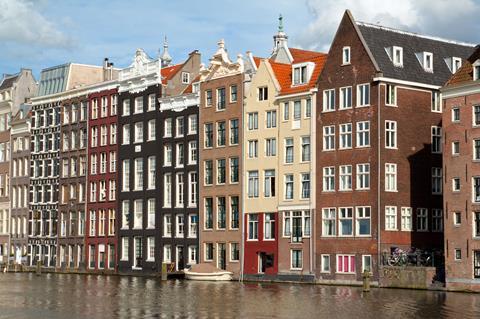The government’s obsession with modern methods of construction (MMC) seems to know no bounds. Even the chancellor is now a convert. However, I still harbour a heretical allegiance to the most ancient method of construction – brick.

Among a flurry of support for housing and infrastructure in the 3 March Budget, Rishi Sunak unveiled £10m of “seed funding” for a new taskforce to “fast-track” the adoption of MMC. This is nothing new: a long succession of housing ministers have evangelised offsite production as a silver bullet for solving the housing crisis.
Government housing quango Homes England wants a quarter of new houses it supports to be built ‘offsite’ and has even invested directly in modular homebuilders ilke Homes and Urban Splash. Now, further investment appears to be on the cards; former chief executive of Crest Nicholson Stephen Stone was this month appointed to the ilke board of directors to “forge partnerships with institutional investors”. If that doesn’t mean the company is looking to float its shares, I’m a Dutchman.
Dutchmen, it turns out, were no mean bricklayers, as I was reminded while poring over Brick: A World History by James WP Campbell and Will Pryce, a magnificently written and illustrated 320-page tome I got for Christmas. I heartily recommend it to all fellow brick geeks. (I should declare an interest: a brick company is among my clients; publisher Thames & Hudson is not.)
Brick’s history spans 10 millennia, encompassing ancient Babylon and St Pancras station
Ornately fashioned brick facades were hallmarks of the glorious townhouses that sprouted like tulips (but held their value longer) during Amsterdam’s Golden Age. To this day, British bricklayers still learn ‘Dutch’ and ‘Flemish’ bonds (among other patterns nicely illustrated in the book’s glossary).
This exemplifies brick’s infinite flexibility, often limited in factory-built homes. My architect chum explained this is down to the 2:3:6 ratio of height, width and length.
But 16th-century Flemish artisans were merely new kids on brick’s block. Its history spans 10 millennia, encompassing ancient Babylon, the triumphs of Rome and the Renaissance, Persian mausoleums and St Pancras station, all sumptuously detailed in the book.

Not all architects share my friend’s enthusiasm, ‘starchitects’ in particular, it would seem. You’ll doubtless find more coffee table books extolling the ‘Modernist’ purity of concrete (actually, it still supports the dome of Hadrian’s Pantheon) than clay in the RIBA bookshop; and the architects’ body even contrived to get the tarted-up but still very unlovely ‘Brutalist’ Preston bus station on the longlist for the 2019 Stirling Prize.
One feature of these folios, however, is that the photography is invariably shot against perfect blue skies. Therein lies the problem: concrete looks s**t in the rain – just take a trip to Preston any month with an ‘r’ in it.
Carbon reduction
However, in the greatest question of the age facing the development industry – carbon reduction – it is harder to justify either brick or concrete. Both consume a lot in their manufacture, although producers have been reducing it over the past decade or so and are committed to cutting it more. It’s a bit of a VAR decision to say which uses most. But, over a lifetime, brick should win… for the simple reason that a concrete building seems more likely to be pulled down quicker.
Or perhaps not. I’ve heard (admittedly, at least third-hand) that one UK brick company has had a request from the unlikeliest of sources: Russia. Rather than demolishing their drab, weather-beaten housing blocks, it seems some building owners would prefer to have them reclad. And what better antidote to Stalinist conformity than English eccentricity? This would presumably be achieved by fixing brick ‘slips’, an inch or so thick, to the outer walls.
Back on these shores, similar techniques are increasingly being researched by manufacturers to make panels of slips – which they’ve offered for some years – more user-friendly and, importantly, more adaptable for MMC housing production in a ‘plug-and-play’ approach. No doubt, this could also be used for recladding tower blocks in a material that occupants can be assured has stood the test of time – 10,000 years, give or take.
Alastair Stewart is an equities analyst and consultant






























No comments yet